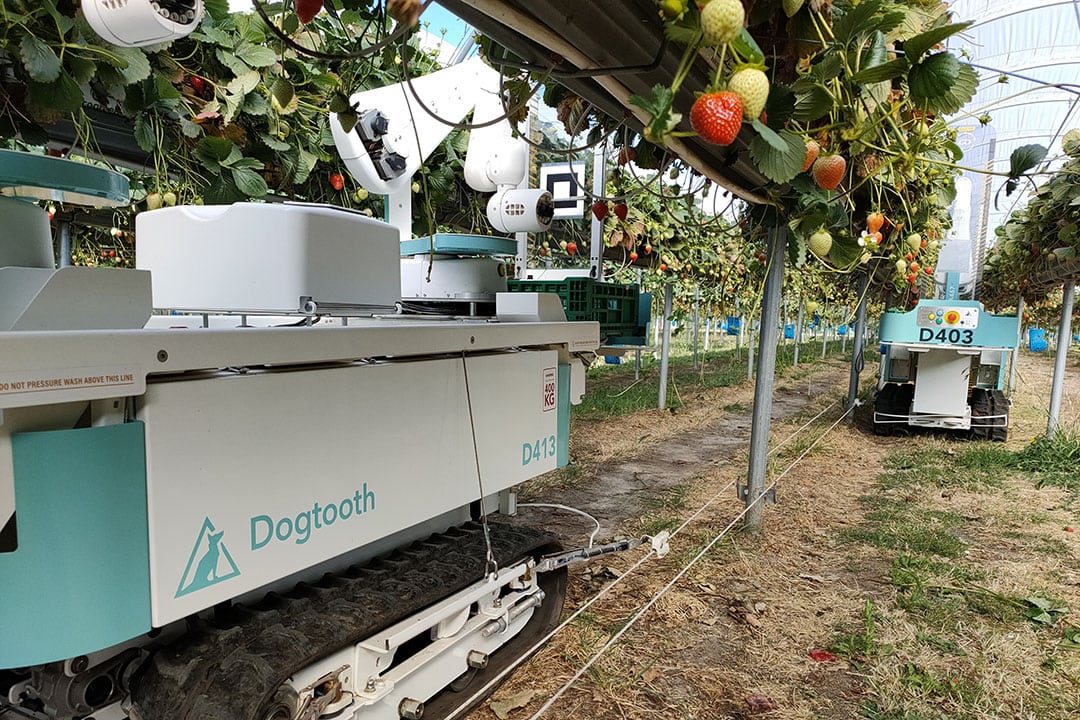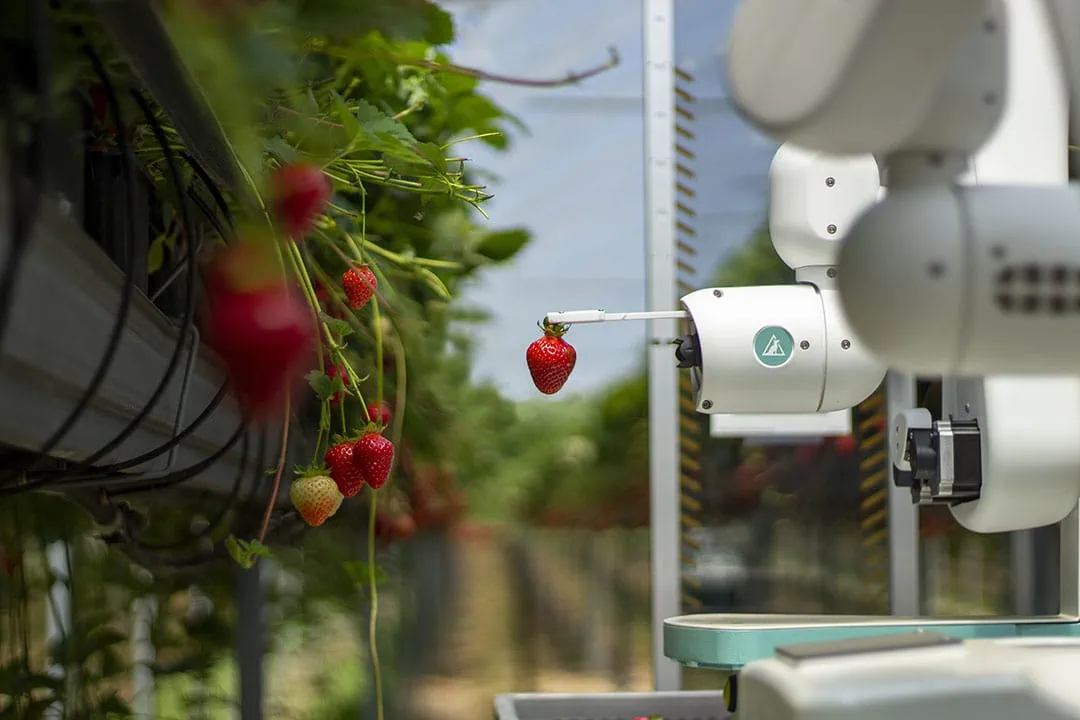Strawberry-picking robots contribute to peace of mind for Tasmanian grower

Australian fruit farm Burlington Berries is using 16 robotic harvesters to pick its strawberries. “It’s a productivity tool that is very consistent and delivers good quality”, Site Manager Eva Thilderkvist of Dogtooth Technologies says.
Eva has been busy this season on the fruit farm at Cressy, in northern Tasmania. She has been running the robots and the team around them, overseeing quality control, and occasionally she has been repairing robots. “I do a bit of everything”, she explains.
The strawberry-picking robots arrived from the United Kingdom early January. Since then, eight poly tunnels are being used as a designated robot area. There are no human pickers in these tunnels, just the operators of the robots.
Strawberry-picking robots solution to labour shortage
So far, the robots prove to be a real potential solution to the shortage of human labour during harvest. “But of course, it is a work in progress”, Eva points out. “We had a few hiccups with the new software release, but that has since been fixed. Our robots are now up and running, and being used every day.”
It is slower than humans pick, but the quality of the picking is many times higher
The strawberry-picking robots – generation 4 – pick about four berries a minute. “Give or take. It obviously depends on different factors, like the number of berries on the plants. It is slower than humans pick, but the quality of the picking is many times higher. At the moment only one in a hundred berries is not picked right. That is really good. And we are learning and improving the robots. They will be faster eventually.”
Text continues below image

The electric robots move on tracks along the rows autonomously and pick the strawberries on both sides of each row at the same time. The strawberry is picked, and then placed in a punnet or rejected into a different tray. The robots have a zero-turn radius, and weigh about 400 kgs (including batteries).
The lead acid batteries of the robots are charged overnight. They provide a running time of around 8 hours. “We have trialled them on lithium-ion batteries, and then they can run for 18 hours. Eventually, that would be the way to go.”
Yield insights
The robots also provide yield insights for Burlington Berries. As they travel along each crop row, Dogtooth’s robots count berries at each stage of maturity. An inspection system uses 360 degree imaging of every picked berry to determine mass and ripeness and identify a wide range of defects.
Currently, one supervisor can manage eight robots, using a tablet. “The goal for next season is to go up to twelve”, Eva says. All robots are running on a Wi-Fi network. Operators can see where the robots are, how much they have picked and if there are any issues that need attending to.”
Also read: Strawberry-picking robot uses ultra violet light to control funguses
The robots have been picking in the UK last season, and were shipped to Tasmania to keep them working all year round. “We want to maximise field time”, Eva explains. “Its important for us to be out in the field and learn from our experiences.”
Text continues below image

Burlington Berries trialled its first robot in collaboration with Dogtooth Technologies nearly seven years ago. For the Tasmanian grower, the technology offers peace of mind, as labour shortages are more and more impacting businesses in agriculture.
They are reliable. It is a sturdy piece of machinery
“It’s a productivity tool that is very consistent and delivers good quality”, Eva emphasises. “They are not a replacement for your workforce. It is more of a supplement for the capacity of the farm. They are well able to go over the terrain on the farm. And they are reliable. They are not going to be sick. It is a sturdy piece of machinery.”
Trials with picking berries at night
Dogtooth Technologies offers the robots under a picking-as-a-service agreement. “But eventually they will be a commercial sellable product” , Eva expects.
The company is currently running trials in the UK to see if these robots can also successfully pick berries at night. All robots are already equipped with LED lights. “That would be a huge game changer. Picking fruit during the night, with cooler temperatures, would extends shelf life with at least two days”, Eva says.
Join 17,000+ subscribers
Subscribe to our newsletter to stay updated about all the need-to-know content in the agricultural sector, two times a week.



